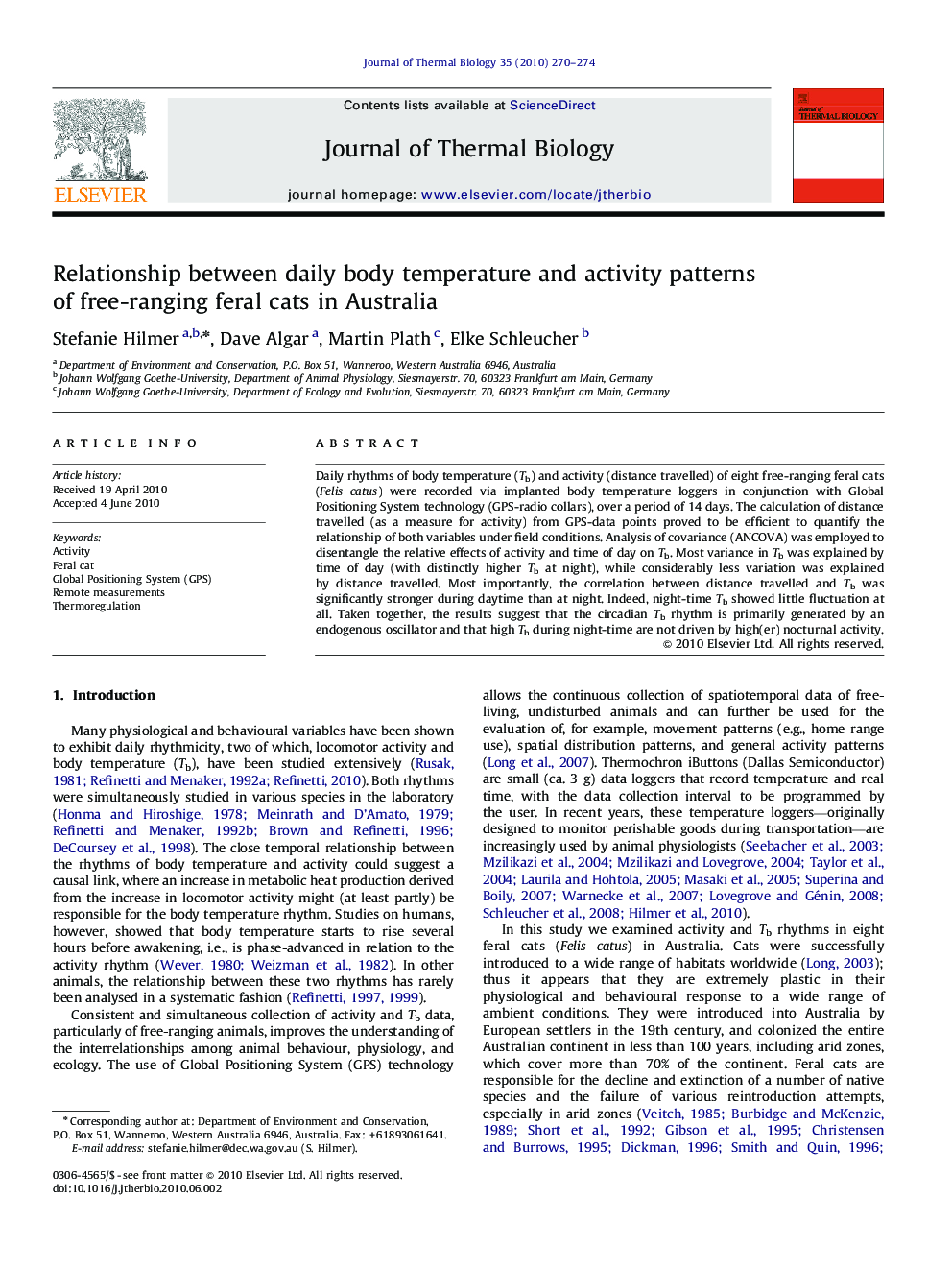| Article ID | Journal | Published Year | Pages | File Type |
|---|---|---|---|---|
| 2843449 | Journal of Thermal Biology | 2010 | 5 Pages |
Daily rhythms of body temperature (Tb) and activity (distance travelled) of eight free-ranging feral cats (Felis catus) were recorded via implanted body temperature loggers in conjunction with Global Positioning System technology (GPS-radio collars), over a period of 14 days. The calculation of distance travelled (as a measure for activity) from GPS-data points proved to be efficient to quantify the relationship of both variables under field conditions. Analysis of covariance (ANCOVA) was employed to disentangle the relative effects of activity and time of day on Tb. Most variance in Tb was explained by time of day (with distinctly higher Tb at night), while considerably less variation was explained by distance travelled. Most importantly, the correlation between distance travelled and Tb was significantly stronger during daytime than at night. Indeed, night-time Tb showed little fluctuation at all. Taken together, the results suggest that the circadian Tb rhythm is primarily generated by an endogenous oscillator and that high Tb during night-time are not driven by high(er) nocturnal activity.
